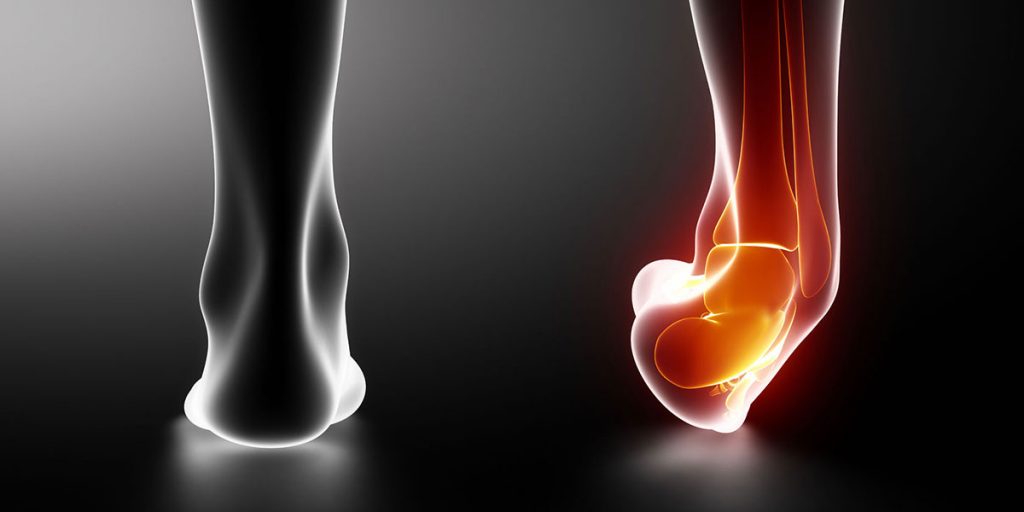Types of Ankle Sprains: High vs Low Ankle Sprains
Ankle sprains are the most common lower extremity injury and one of the most frequent orthopedic injuries overall. In fact, approximately 28,000 Americans sprain an ankle every day and – according to the International Ankle Consortium, 55 percent of people never seek orthopedic treatment for their ankle injury.
And while active people, including amateur and professional athletes, are the most likely to experience one of the three types of ankle sprains, it doesn’t take much to end up with a painfully swollen rolled ankle.
Whether you’ve suffered an ankle sport injury or are experiencing ankle pain from a misstep or fall, you should consider consulting an ankle doctor for a proper diagnosis.
An orthopedic ankle specialist will be able to correctly diagnose what type of ankle sprain you’ve suffered and will prescribe a course of action to get you back on your feet.
High vs Low Ankle Sprains
According to the Steadman Philippon Research Institute, there are more than one million ankle injuries every year – approximated 85 percent of which are ankle sprains. In general, an ankle sprain occurs when you roll, twist or turn your ankle in a way that can stretch or tear the ligaments that hold your ankle joint together.
High Ankle Sprains
A lot less common but often more serious than low ankle sprains, high ankle sprains affect the upper ligaments around your ankle that connect your fibula (outside leg bone) to your tibia (shin bone). High ankle sprains are much more common in high-impact or contact sports where planting and rotating your foot to the outer side of your leg can cause the injury.
Some high ankle sprains can result in a fractured fibula, from which you won’t be able to bear any weight on the injured ankle.
Your orthopedic ankle specialist will be able to determine the extent of your ankle injury based on clinical diagnostic tests, weight-bearing imagery (X-ray, CT scan or MRI) and the location of your pain.
High Ankle Sprain Symptoms
High ankle sprains typically are caused by a traumatic ankle injury. Symptoms include:
- Pain above the ankle that increases with outward rotation of the foot
- Pain with walking
- Bruising and swelling across the high ankle
- Inability to do a single-leg calf raise
Ankle Surgery
Your ankle doctor will also want to determine if your high ankle injury is stable or unstable. A stable high ankle sprain can usually be treated conservatively by immobilization. An unstable high ankle sprain, however, typically requires ankle surgery to stabilize the joint.
Low Ankle Sprains
The most common type of ankle sprain, a low ankle sprain involves the ligaments that support the joint just below the true ankle joint, called the subtalar joint. This joint allows the foot to rotate left and right (or inside and outside).
Nearly 85 percent of all ankle sprains happen on the outside (lateral) of the ankle joint. Referred to as a lateral ankle sprain, this type of low ankle sprain presents with pain, swelling, bruising and joint instability.
Medial Ankle Sprains
The third type of ankle sprain involves injuring the inside ligaments of the ankle, which are collectively called the deltoid ligaments. As these ligaments are much stronger than those involved with high and low ankle sprains, medial ankle sprains fairly rare.
Medial ankle sprains occur from eversion with dorsiflexion (translation: turning the toes outward while pointing them up). While uncommon, a medial sprain can take nearly twice as long to heal as high and low ankle sprains.
If you are suffering from ankle pain or believe you have sprained your ankle, please seek medical help. Unfortunately, ankle sprains tend to weaken the ligaments and the ankle joint, leaving it more susceptible to worsening sprains over time. Proper treatment and rehabilitation can help strengthen and heal your ankle injury correctly.
If you have any questions about high, low or medial ankle sprains or would like to talk to an orthopedic ankle specialist, please feel free to contact us.

1 Comment
Permalink
My dad accidentally sprained his ankle whilst playing hockey, which is why we’re currently looking for an orthopedist that will help evaluate his current condition. It’s surprising to learn that there are more than one million ankle injuries every year. I also never knew that this type of injury can fracture the fibula.